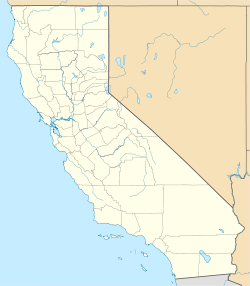Mary Andrews Clark Memorial Home
|
Mary Andrews Clark Memorial Home
|
|

Mary Andrews Clark Memorial Home
|
|
| Location | 306–336 S. Loma Dr.,Los Angeles, California |
|---|---|
| Coordinates | 34°3′36″N 118°15′51″W / 34.06000°N 118.26417°WCoordinates: 34°3′36″N 118°15′51″W / 34.06000°N 118.26417°W |
| Built | 1912 |
| Architect | Benton, Arthur Burnett; Whyte, George H. |
| Architectural style | Châteauesque, Late 19th and 20th Century Revival |
| NRHP Reference # | 95001152 |
| LAHCM # | 158 |
| Significant dates | |
| Added to NRHP | October 5, 1995 |
| Designated LAHCM | 1976-07-07 |
Mary Andrews Clark Memorial Home is a four-story, 76,000-square-foot (7,100 m2) "French Revival Chateauesque" brick structure in the Westlake neighborhood of Los Angeles near downtown. It was built in 1913 as a YWCA home for young working women.
The house was built by William A. Clark (1839–1925), the copper magnate after whom Clark County, Nevada, was named, as a memorial to his mother Mary Andrews Clark (1814–1904). The home was operated by the YWCA from 1913 to 1987, when it was closed as a result of damage sustained in the Whittier Narrows earthquake. The building reopened in 1995 as housing for low income single workers. The building has been designated a Los Angeles Historic-Cultural Monument, and is listed on the National Register of Historic Places.
The Mary Andrews Clark Home was built by former U.S. Senator and Montana copper magnate William A. Clark, "as a perpetual memorial" to his mother, who died in Los Angeles. Clark announced the gift in 1910 after acquiring a 350 by 180-foot (55 m) lot on top of Crown Hill, a short distance west of Downtown Los Angeles. Clark said the structure to be built on the site would be a home for young women who work for a living, "where they can live in delight and comfort at a price which every woman can afford." On seeing the architectural plans for the new home, the Los Angeles Times reported: "The home, beautiful architecturally and ideal in its conception, will rank as one of the finest in the country." The building, described at the time as a French chateau type building, was dedicated in February 1913 "as a memorial not only to his own mother but as a shrine where thousands of young women in the coming years may worship the memory of their good mothers." The building, designed by Arthur Burnett Benton (1858–1927), with many gables, cupolas, turrets and balconies, was turned over to the YWCA, having been built and furnished at a total cost of $500,000. Not less than 3,000 persons visited the home for the first public reception in May 1913, and the Los Angeles Times described the building, lawns and rose garden as a "Visitors' Mecca."
...
Wikipedia



